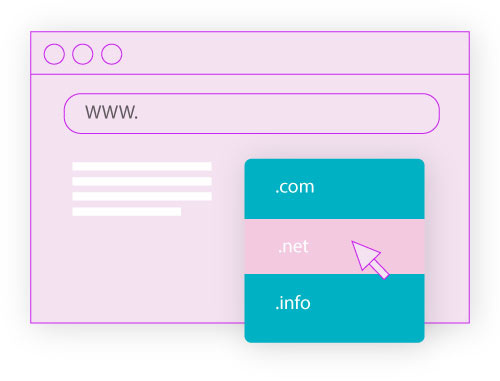Niche marketing means channeling all the marketing efforts towards one well-defined population segment. In other words, niche marketing is a very concentrated form of marketing. Marketers identify the niches to target by recognizing consumers’ needs in specific segments and then providing special offerings. Efficiently tailoring a marketing campaign to a niche audience is extremely important. One important thing to comprehend is that the ‘niche’ does not exist but is created using smart marketing techniques and identifying the targeted audience.
What makes a ‘Niche’?

Every market can be divided into different segments based on different factors and preferences. Some of the ways to define niche are –
- The demographic base includes age, gender, income, and education level.
- Geographical niche markets are based upon the location of buyers.
- Psychographics niche markets include the interest, values, needs, and attitudes of consumers.
What are the Benefits of Niche Marketing
1. Increased Profits
Niche businesses are often high-margin business. Customers do not mind paying a little extra because they can only get that service in that company or under its brand.
2. Greater Trust and Credibility
Another benefit of niche marketing is a strong relationship with the customers because it operates in a small segment. The relationship between the company and the brand becomes stronger, which is also a key to customer loyalty. As you gain experience in your specific marketing niche, you start to develop a reputation as an expert in the field.
3. Reduced Competition
There is no or little competition under that segment. The company is virtually the market leader and enjoys a price monopoly. Once you are seen as an expert in your field, it’s easier to get more of the same types of customers. You have a clear sales advantage.
4. Word-of-mouth marketing has gone wild.

It’s easier to get quality referrals when you have a niche, mainly because a niche market lets you build trust and credibility as you work on gaining awareness for your products and services. The result is that you come off as the best in your field.
Disadvantages of Niche Marketing
- Not suitable for small-scale companies: Due to smaller segments, the niche marketing approach is inappropriate for smaller companies and intends to expand in the current market. Smaller markets make it a bit difficult to reap larger profit margins within the market.
- Chances of survival may fall: Chances of a firm’s survival may decrease if its marketing strategy is solely based on niche marketing.
- May not be suitable for the longer-term: Niche marketing ideas may not be suitable for long-term marketing strategies. This marketing approach may not deliver adequate business, which can result in reduced profit margins.
Examples of Niche Marketing

1. Bloggers
Bloggers best understand the concept of niche marketing. What happens is that a particular blogger identifies a particular topic that has a very specific audience and chooses to target that audience instead of targeting everyone. For example, a blogger writes about only shapewear.
2. Some modern schools
Some modern schools fall under the category of niche marketers pretty well. A case in point is the Montessori school system, which specializes in natural learning, nothing else. Though this type of school appeals to only a small fraction of the population, they’re the only alternative for parents who don’t want to enrol their children into the structured, conventional type of schools
3. Physical Therapist Niches
- Victims of stroke who have lost their motor skills or mobility
- Runners who are recovering from panthers fasciitis
- Initial responders of office-related back injuries
Who Uses Niche Marketing?
Various companies are using niche marketing strategies in their marketing campaigns. This type of marketing strategy is very useful for small businesses with very limited resources.
Those products or services targeting a specific segment of the population can also use a niche marketing strategy. Bugatti is using a niche strategy and targets a very small segment of the population. Bugatti segments its market based on high income and western countries like France, Germany, etc., in short, the ultra-rich people.
Niche Marketing Strategies to Employ
1. Focus on meeting the specific needs of your customer

Start by asking yourself, “what’s distinctive and appealing regarding my idea?” This may help you determine the particular wants of your potential market base as you’re employed to form your business the answer they’ve been searching for.
2. Speak an equivalent language as your customers.
You should be ready to mix in, speak an equivalent language as your target market, or translate your complete values and edges into one thing that everybody in your niche promoting cluster understands.
3. Test the market
It’s necessary that you just check your market before investing a huge amount of cash on that. Use online advertising like Google Adwords and Facebook ads to check landing pages and product offerings for a fine-tuned demographic and find feedback within the early stages from those customers and potential customers to develop a product that gives a real benefit to them.
How to Build a Website for your Niche Business
1. Brainstorm Niche Ideas
The first step to building a successful niche website is picking a niche to target. This just means what general topic are you interested in or, even better, what can be profitable?
2. Begin In-depth Keyword Research

Now that you know what general niche you want to go into, it’s time to do more in-depth keyword research.
If you can target a few low competition keywords, you are much more likely to rank than if you were to target highly competitive terms. This means that you will often need to target very low search volume keywords…and that’s just fine!
3. Determine How Your Site Will Stand Out
- What is the overall goal of your website?
- What problems are you solving for your readers?
4. Pick a Good Domain Name

Some people spend much too long trying to come up with a good domain name. However, the reality is that just about anything will work.
I recommend that you do NOT worry about putting keywords in your domain name. The days of using exact match domains are long gone. You will do much better with something memorable and brandable. You should also consider implementing DNS protection to safeguard your domain name from cyber threats.
5. Host Your Website, Pick a Theme, and Logo
A web host is a dedicated server space for your website
.A theme commands the look and style of a website. It consists of font types and sizes, colour schemes, and other style elements that affect a site’s look and feel. Briefly, the website’s theme reflects the identity of your brand and helps to develop the customer experience.
The logo is the embodiment of your company. It’s the true essence of a Brand’s Identity. Brand’s are often recognized by their logos. It’s the shortest but most efficient method to create brand value. A good logo can give your brand identity and help in market recognition.
6. Develop a Long Term Content Strategy

These ideas can take you from having just a so-so website to having a great website that helps you stand out as an authority.
Content strategy has evolved way beyond printing ads. What you need to do is-
- To curate a strong online presence across social media channels
- To Schedule blogs for posting
- To cover topics that interest your customers and provide them with a reason to return to your website.
- To draft a documented content plan.
7. Draft a marketing strategy
A market plan addresses the following three questions – Where are we now? What is our goal? How are we going to achieve that? In an attempt to answer all these questions, comprehensive research is conducted, and accordingly, the market strategy is designed and executed.
Marketing strategy is a futuristic approach that involves the ideation and execution of a plan to promote and sell the products or services. It can be a long-term or short-term plan which depends upon the nature of the business. Many factors are considered while planning a marketing strategy, including analyzing the competitors, evaluation, and selection of the market.
8. Use Social Media Marketing

Being online is the way to go. In the past few months, an increase in online shoppers has led to an increase in online penetration of retail groups to 65%, with around 53.4 million visitors per month and annual growth of 15%. Even if the rest of the 35% of retail is not online, a higher percentage of them are using social media platforms as an online channel for their businesses.
Wrapping it up
In this blog, we have learned all about niche marketing. I hope you find this blog informative and helpful for your business.
















